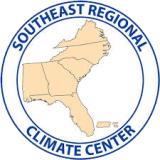Southeast Climate Monthly Webinar: April 25, 2023
The start of 2023 could best be described as “warm’’ for much of the Southeast, where most states observed their warmest mean temperatures on record between January and March. Temperatures were above average over the past month. Precipitation was more variable with below-average amounts in the northern and southern ends of the region and above-average amounts across the middle of the region and in southeast Florida. Drought conditions improved across southern portions of Alabama, Georgia, the Florida Panhandle, and eastern North Carolina, while drought expanded across Virginia, the Florida Peninsula, and Puerto Rico. El Niño is coming on strong, and we are currently in an El Niño Watch. Streamflows are mostly in the normal range as we are coming out of the Southeast wet season. Reservoirs have begun their climb to summer pools. The Florida Peninsula differs, where the wet season begins in June and ramps up through early fall.
Looking Ahead: Cool and wet conditions are expected over the next two weeks. Over the next three months, temperature and precipitation are expected to be above average with drought removal likely across the region, including Puerto Rico. River flood risk is forecast to be near what is typical for the interior Southeast river systems. Early summer is generally a down time for flooding in the Southeast because the wet season has ended for the interior Southeast. For the Florida Peninsula, the late spring season typically is quiet as far as river flooding until the convective wet season begins in June and flooding becomes more active. ENSO-neutral conditions are expected to continue through the spring. If El Niño effects start early, we could see wet and cool conditions start in mid/late fall, and this is something that agricultural producers should consider in their planting and harvesting decisions.
Check out this month’s special presentation, “How does a warming planet affect precipitation in the Southeast,” from Adam Terando at the USGS Southeast Climate Adaptation Science Center.
About This Webinar
The Southeast Climate monthly webinar series is hosted by the Southeast Regional Climate Center, the National Integrated Drought Information System (NIDIS), and the NOAA National Weather Service. These webinars provide the region with timely information on current and developing climate conditions such as drought, floods, and tropical storms, as well as climatic events like El Niño and La Niña. Speakers may also discuss the impacts of these conditions on topics such as agriculture production, water resources, wildfires, and ecosystems.






